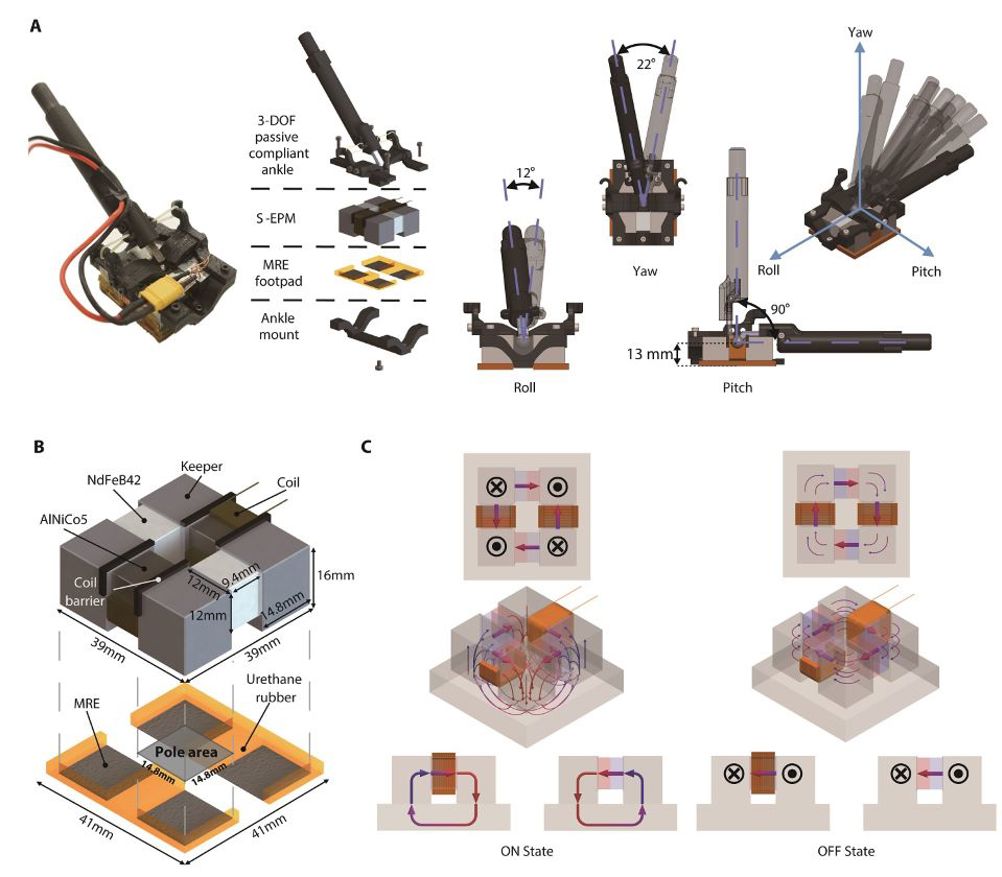Led by Professor Hae-Won Parkat from the Department of Mechanical Engineering at KAIST (Korea Advanced Institute of Science and Technology), the team developed a foot sole that quickly turns the magnetic adhesive force on and off while retaining high adhesive force, even on an uneven surface.
The team achieved this using an Electro-Permanent Magnet (EPM) and a Magneto-Rheological Elastomer (MRE), a material made by mixing a magnetic response factor such as iron powder with an elastic material such as rubber, which they mounted on a small quadrupedal robot made by the team.
According to KAIST, the EPM can turn electromagnetic force on and off with a short current pulse and, unlike general electromagnets, it does not require energy to maintain magnetic force. The research team proposed a new EPM with a rectangular structure arrangement, enabling faster switching while lowering the voltage required for switching compared to existing electromagnets.
MRE allowed the team to increase the frictional force without significantly reducing the magnetic force of the sole. The proposed sole weighs 169g but provides a vertical gripping force of about 535N and a frictional force of 445N, which KAIST said is sufficient gripping force for a quadrupedal robot weighing 8kg.

MARVEL (Magnetically Adhesive Robot for Versatile and Expeditious Locomotion) is said to have climbed a vertical wall at 70cm per second and was able to walk while hanging upside down from a ceiling at a maximum speed of 50cm per second, which is claimed to be the world's fastest speed for a walking climbing robot.
In addition, the research team demonstrated that the robot can climb at a speed of up to 35cm on a surface that is painted, dirty with dust and the rust-tainted surfaces of water tanks. It was experimentally demonstrated that the robot not only exhibited high speed, but also can switch from floor to wall and from wall to ceiling, and overcome 5cm high obstacles protruding from walls.
The new climbing quadrupedal robot is expected to be widely used for inspection, repair, and maintenance of large steel structures such as ships, bridges, transmission towers, oil pipelines, large storage areas, and construction sites.
The team’s research is described in Science Robotics.
One of the first co-authors of the paper, a Ph.D. student Yong Um of KAIST’s Department of Mechanical Engineering, said, "By the use of the magnetic soles made up of the EPM and MRE and the non-linear model predictive controller suitable for climbing, the robot can speedily move through a variety of ferromagnetic surfaces including walls and ceilings, not just level ground. We believe this would become a cornerstone that will expand the mobility and the places of pedal-mobile robots can venture into."
He continued: “These robots can be put into good use in executing dangerous and difficult tasks on steel structures in places like the shipbuilding yards.”











Guest blog: exploring opportunities for hydrogen combustion engines
"We wouldn't need to pillage the environment for the rare metals for batteries, magnets, or catalisers". Batteries don't use rare...